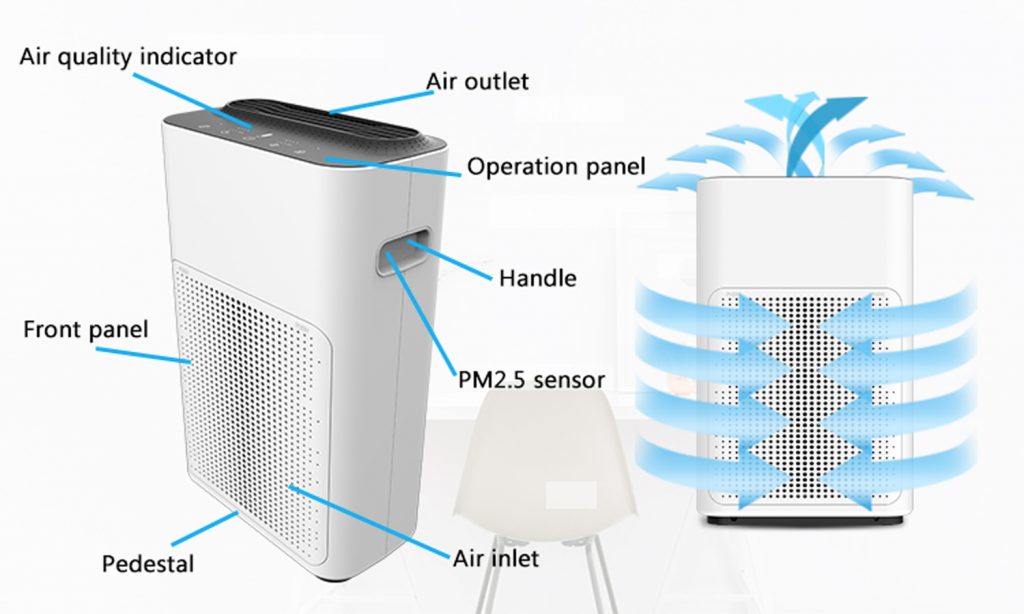How much do you know about the harm of PM2.5 to the human body?

Although PM2.5 is only a component of the Earth’s atmospheric composition, it has an important influence on air quality and visibility. Compared with coarser atmospheric particles, fine particles have a small particle size, are rich in toxic and harmful substances, have a long residence time in the atmosphere, and have a long transport distance, thus having a greater impact on human health and the quality of the atmospheric environment. Studies have shown that the smaller the particles, the greater the harm to human health. Fine particles can drift farther away, so the range of influence is larger.
Fine particulate matter is more harmful to human health because the smaller the diameter, the deeper the area into the respiratory tract. Particles of 10 μm diameter are usually deposited in the upper respiratory tract, and below 2 μm can penetrate deep into the bronchioles and alveoli. After the fine particles enter the human body to the alveoli, it directly affects the ventilation function of the lungs, making the body easily in anoxic state.
There is already a large body of epidemiological evidence that PM2.5 has both acute and chronic health effects. The acute health effect is reflected in the high PM2.5 exposure to increase the risk of acute respiratory diseases and cardiovascular and cerebrovascular diseases. Chronic toxicity is reflected in PM2.5 may induce lung cancer, COPD (chronic obstructive pneumonia), cardiovascular and cerebrovascular diseases and other chronic diseases. Studies have also shown that exposure to fine particles can affect the human immune system, nervous system, and the like.
About 2.1 million people die every year from the increase in particulate matter such as PM2.5
The Chinese Academy of Sciences has identified six sources of PM2.5 in Beijing. It is reported that the 2012 Global Environment Outlook 5 published by the United Nations Environment Program pointed out that 700,000 people die each year from respiratory diseases caused by ozone, and nearly 2 million are premature. Deaths are related to particulate matter contamination. The Proceedings of the National Academy of Sciences (PNAS) also published a research report saying that the average life expectancy of humans has been shortened by five and a half years because of air pollution.
There is scientific evidence that in the negative ion environment, human blood will greatly increase the absorption of sodium, potassium and calcium. Thereby improving the acid-base balance of the human blood system and helping the body to transform into a weakly alkaline constitution.
The water of the main component of our body is also called human body fluid. Except for stomach acid, most other body fluids are weakly alkaline, and its PH value is 7-8. This PH value of body fluid is the most beneficial to the survival of our body’s cells, which is conducive to the coordinated operation of various tissues and organs, so that they can perform their duties and exert their maximum effect, making people healthy, energetic, and not easy to get sick. Even if they get sick easily Healed; on the contrary, people’s body fluids become sour, which is not conducive to health.
The OLANSI KJ200G-A3 series air purifier has multiple filters to remove PM2.5 and release negative ions.
If you are interested in this, please contact us for more products and preferential prices
Helen:
+86 13922346046
info@olansiglobal.com
https://www.olansiglobal.com